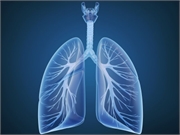Patients treated at a National Cancer Institute-designated center more likely to receive these drugs for lung cancer
THURSDAY, Dec. 12, 2019 (HealthDay News) — Not all patients have access to new, high-cost lung cancer drugs, according to a study recently published in the Journal of the National Cancer Institute.
Cathy J. Bradley, Ph.D., from University of Colorado in Aurora, and colleagues used Surveillance, Epidemiology, and End Results-Medicare data (2007 to 2015) supplemented with the Area Health Resource File to identify patients (aged ≥66 years) enrolled in fee-for-service Medicare Part D who were diagnosed with a first primary diagnosis of metastatic non-small cell lung cancer and received an antineoplastic agent. High-cost antineoplastic agents were defined as ≥$5,000 per month.
The researchers found that patients who lived in areas of high poverty were 4 percentage points less likely to receive high-cost agents. Patients not treated at a National Cancer Institute-designated center were 10 percentage points less likely to receive these agents. There was a 27-percentage point increase in the likelihood of receiving a high-cost agent in 2015 versus 2007, illustrating the rapid change in practice patterns.
“Our findings suggest that uneven access to specialized care due to poverty or living in remote areas may explain some of the observed disparities,” a coauthor said in a statement.
Copyright © 2019 HealthDay. All rights reserved.








